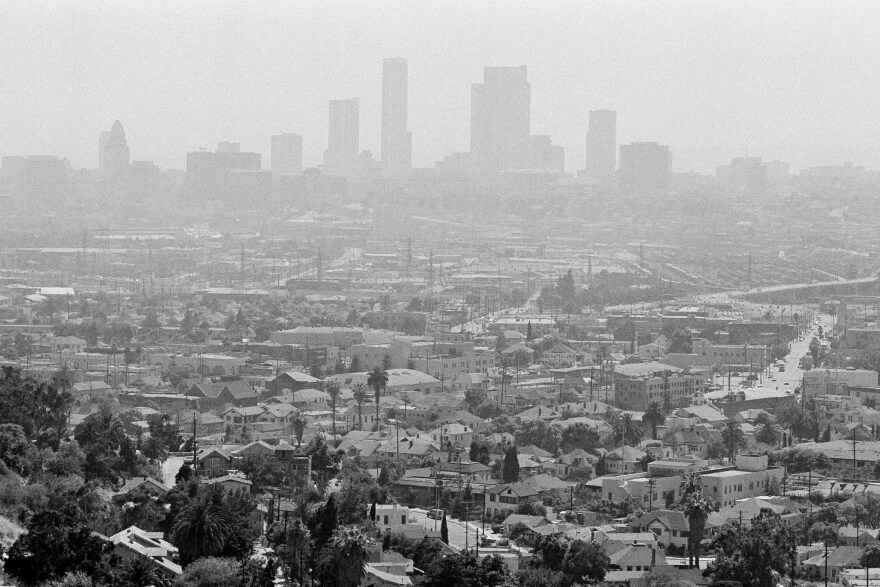In this week’s episode of the Trump on Earth podcast, we explore a new rule that would throw out vast amounts of scientific research in the name of transparency.
From its inception, science has been at the core of the EPA’s mission. The agency has used science about the health effects of industrial pollution to make our air and water cleaner. But EPA administrator Scott Pruitt wants to limit what kinds of research the agency can use when making regulations. To that end, he has introduced the Strengthening Transparency in Regulatory Science rule.
Transparency — sounds good, right? But if the rule goes into place, EPA scientists would no longer be allowed to use studies that don’t make their raw data available to the public. That includes most public health studies because these often use confidential patient information. On top of that, the rule would exempt certain types of industry-funded science.
This has many scientists furious. Nearly 1,000 of them signed a letter calling the proposal a way to run “political interference in science-based decision making.”
For our podcast Trump on Earth, we wanted to understand more about this rule so we turned Bernard Goldstein, he was assistant administrator for research and development at the EPA during the Reagan administration. He’s now a professor emeritus at the University of Pittsburgh’s Graduate School of Public Health.
Goldstein says that to understand the problem with Pruitt’s new proposed rule, you have to understand how environmental health science works. While double-blinded, randomized controlled trials (RCTs) using placebos are common in drug trials, that model is impossible for most environmental health research.
“I can’t put half of Pittsburgh on an air pollutant but not the other half,” Goldstein explains. “What we do instead is take advantage of natural occurrences in cities with different levels of a pollutant.”
One of the key studies having to do with air pollution comes from a coal fired power plant in Utah. Employees went on strike suddenly, and for months, the plant wasn’t emitting anything. Researchers were able to look at the community to see what happened.
“When the coal fired plant wasn’t working, there were less respiratory effects,” says Goldstein. “But we didn’t design that study. That was something that came about by chance.”
One study in particular has had a big impact on helping form clean air regulations. The “Six Cities” study from Harvard tracked the health of thousands of people for almost two decades. Scientists published their findings in 1993 and concluded that people in cities with dirtier air died earlier than those in places with cleaner air. With this information in hand, the EPA was able to set stricter standards for air pollution. And save lives. But industry cried foul, and they demanded to see the raw data.
“The Harvard folks did not want to share the raw data both because of people’s names and numbers being released, and also because they simply did not want to spend the rest of their careers tied up in battling with environmental consultants to defend themselves,” says Goldstein.

Many people in the Trump administration, and the country, have expressed skepticism of academic scientists. They want to know why the country trusts people who work at universities and think tanks in Washington over industry-funded researchers. Goldstein says universities are motivated by the scientific process and finding the most accurate answers to the questions before them. He points out that environmental consultants are often hired by industry to cast doubt on that academic research.
“Consultants get paid if they can find a potential problem with any study,” he says. “It’s not really any different than a defense attorney who’s really good at getting someone who is guilty off because that’s who the guilty people are going to want to hire again. It doesn’t matter whether it’s right or wrong.”
So who would this new transparency rule hurt and who would benefit? Goldstein says it certainly will benefit industry in the short term. And in the long term it benefits all those, including some environmental groups, that would prefer to have their advocacy triumph over facts and science.
“It’s just a matter of, do people believe that we can get ahead as a nation with advocacy on one side or the other rather than on facts.”
Goldstein believes that this rule is part of a concerted effort to attack science at the EPA.
“Science is just another political game that they can play,” he says. “It has nothing to do with truth or not truth.”
The public comment period for the Strengthening Transparency in Regulatory Science rule is open until May 30th. You can file a comment here.
##
Want to know more? Download this episode to hear the entire interview with Dr. Goldstein.




